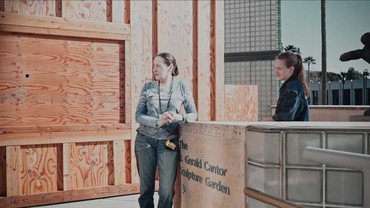Visit
Vera Lutter
October 28–November 1, 2017
TEFAF New York
www.tefaf.com
The Los Angeles County Museum of Art will present a special exhibition of Vera Lutter’s new body of work from her residency at the museum. Lutter has been creating photographs that examine the museum’s exterior architecture, gallery interiors, and permanent collection, and this exhibition will mark the first public display of these new photographs.
Share
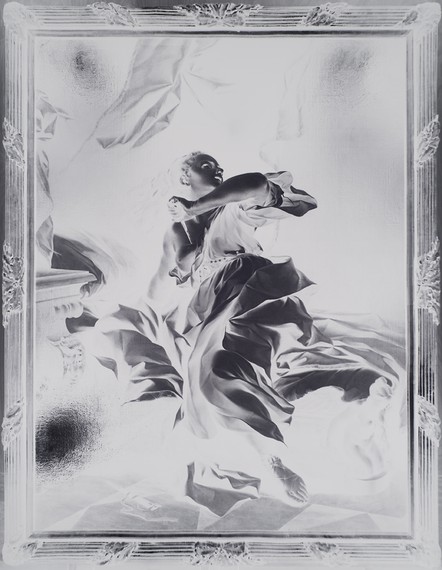
Vera Lutter, The Death of Lucretia: February 10, 2017, 2017
Related News
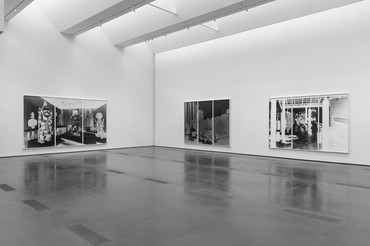
Tour
Vera Lutter
Museum in the Camera
Friday, January 29, 2021, 3–4pm EST
Join Los Angeles County Museum of Art director Michael Govan and the museum’s associate curator of contemporary art Jennifer King for an insightful conversation and tour of the exhibition Vera Lutter: Museum in the Camera. Between February 2017 and January 2019, Lutter documented LACMA using a camera obscura, creating photographs that examine the museum’s exterior architecture, gallery interiors, and permanent collection. Museum in the Camera features the compelling photographs made during this two-year residency. To watch the live event, RSVP at lacma.org.
Installation view, Vera Lutter: Museum in the Camera, Los Angeles County Museum of Art, March 29–August 9, 2020. Artwork © Vera Lutter. Photo: © Museum Associates/LACMA
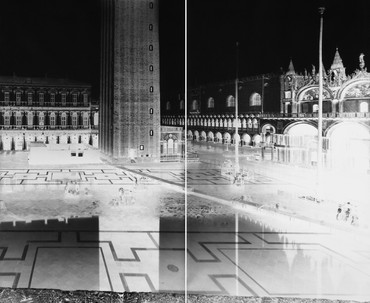
galleryplatform.la
Vera Lutter
Fragments of Time Past
January 7–20, 2021
Nothing is solid in memory. Our minds only hold on to traces, outlines—and that is what my photographs portray.
—Vera Lutter
Gagosian is pleased to present Fragments of Time Past, a selection of photographs by Vera Lutter online for galleryplatform.la.
In Fragments of Time Past, Lutter depicts four different ancient and historical sites: the pyramids at Giza, the ancient Greek temples at Paestum, the eleventh-century Maria Laach Benedictine abbey in Germany, and the distinctive waterways and buildings of Venice during the city’s yearly acqua alta flood season. Presented in a monochromatic photonegative palette, these iconic landmarks and relics take on a new and uncanny visual life: lively canals are smoothed to glossy stillness and solid ground drops away, leaving behind skeletal architectural structures silhouetted against black skies.
Vera Lutter, San Marco, Venice XVIII: November 29–30, 2005, 2005 © Vera Lutter
Video
Vera Lutter
Museum in the Artist’s Camera Obscura
This short film, produced by the Los Angeles County Museum of Art (LACMA), features rare behind-the-scenes footage of Vera Lutter, her assistants, and the LACMA staff, filmed during the artist’s residency at the institution. Lutter and museum curator Jennifer King offer their insights into the artistic process and discuss the meanings they find in these dreamlike photographs.
Still from “Vera Lutter: Museum in the Artist’s Camera Obscura”

Francesca Woodman
Ahead of the first exhibition of Francesca Woodman’s photographs at Gagosian, director Putri Tan speaks with historian and curator Corey Keller about new insights into the artist’s work. The two unravel themes of the body, space, architecture, and ambiguity.
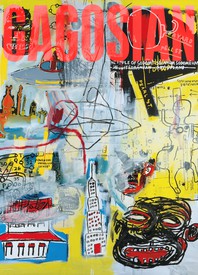
Now available
Gagosian Quarterly Spring 2024
The Spring 2024 issue of Gagosian Quarterly is now available with a fresh cover design featuring Jean-Michel Basquiat’s Lead Plate with Hole (1984).
Simon Hantaï: Azzurro
Join curator Anne Baldassari as she discusses the exhibition Simon Hantaï:Azzurro, Gagosian, Rome, and the significance of blue in the artist’s practice. The show forms part of a triptych with Gagosian’s two previous Hantaï exhibitions, LES NOIRS DU BLANC, LES BLANCS DU NOIR at Le Bourget in 2019–20, and Les blancs de la couleur, la couleur du blanc in New York, in 2022.

Sofia Coppola: Archive
MACK recently published Sofia Coppola: Archive 1999–2023, the first publication to chronicle Coppola’s entire body of work in cinema. Comprised of the filmmaker’s personal photographs, developmental materials, drafted and annotated scripts, collages, and unseen behind-the-scenes photography from all of her films, the monograph offers readers an intimate look into the process behind these films.
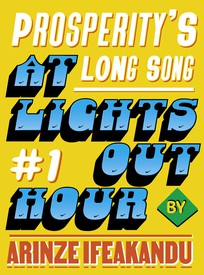
Prosperity’s Long Song #1: At Lights-Out Hour
We present the first installment of a four-part short story by Arinze Ifeakandu. Set at the Marian Boys’ Boarding School in Nigeria, “Prosperity’s Long Song” explores the country’s political upheavals through the lens of ancient mythologies and the mystical power of poetry.

Mount Fuji in Satyajit Ray’s Woodblock Art, Part II
In the first installment of this two-part feature, published in our Winter 2023 edition, novelist and critic Amit Chaudhuri traced the global impacts of woodblock printing. Here, in the second installment, he focuses on the films of Satyajit Ray, demonstrating the enduring influence of the woodblock print on the formal composition of these works.

Adaptability
Adam Dalva looks at recent films born from short stories by the Japanese writer Haruki Murakami and asks, What makes a great adaptation? He considers how the beloved surrealist’s prose particularly lends itself to cinematic interpretation.

Vladimir Kagan’s First Collection: An Interview with Chris Eitel
Chris Eitel, Vladimir Kagan’s protégé and the current director of design and production at Vladimir Kagan Design Group, invited the Quarterly’s Wyatt Allgeier to the brand’s studio in New Jersey, where the two discussed the forthcoming release of the First Collection. The series, now available through holly hunt, reintroduces the first chair and table that Kagan ever designed—part of Eitel’s efforts to honor the furniture avant-gardist’s legacy while carrying the company into the future.

Game Changer: Alexey Brodovitch
Gerry Badger reflects on the persistent influence of the graphic designer and photographer Alexey Brodovitch, the subject of an upcoming exhibition at the Barnes Foundation, Philadelphia.

Goetheanum: Rudolf Steiner and Contemporary Art
Author and artist Ross Simonini reports on a recent trip to the world center of the anthroposophical movement, the Goetheanum in Switzerland, exploring the influence of the movement’s founder and building’s designer Rudolf Steiner on twentieth-century artists.

Hans Ulrich Obrist’s Questionnaire: Frida Escobedo
In this ongoing series, curator Hans Ulrich Obrist has devised a set of thirty-seven questions that invite artists, authors, musicians, and other visionaries to address key elements of their lives and creative practices. Respondents select from the larger questionnaire and reply in as many or as few words as they desire. For the first installment of 2024, we are honored to present the architect Frida Escobedo.

Border Crossings: Exile and American Modern Dance, 1900–1955
Dance scholars Mark Franko and Ninotchka Bennahum join the Quarterly’s Gillian Jakab in a conversation about the exhibition Border Crossings at the New York Public Library for the Performing Arts. Cocurated by Bennahum and Bruce Robertson, the show reexamines twentieth-century modern dance in the context of war, exile, and injustice. An accompanying catalogue, coedited by Bennahum and Rena Heinrich and published earlier this year, bridges the New York presentation with its West Coast counterpart at the Art, Design & Architecture Museum at the University of California, Santa Barbara.
